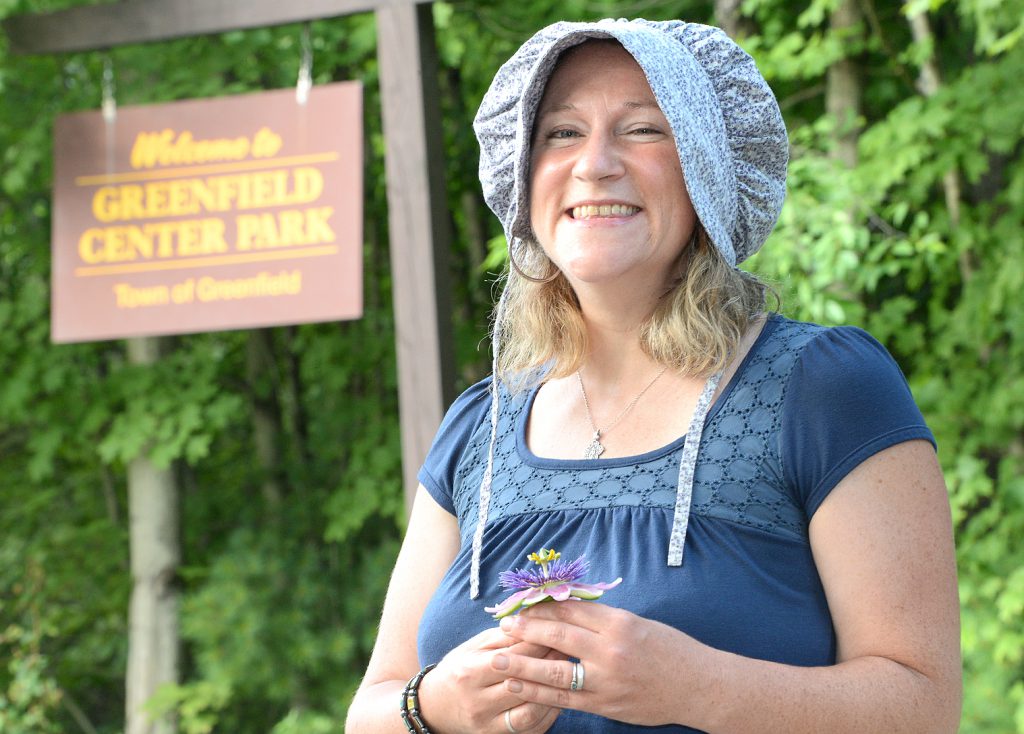
©2019 Saratoga Photographer.com
By Christine Graf
The town of Greenfield Lions Club and the Southern Adirondack Audubon Society have partnered to create a bird-friendly perennial garden in Greenfield Center Park.
The 20-acre park is located in Saratoga County, just off Route 9N on Brigham Road. Jesse Peters, owner of local landscape company Jessecology, was contracted to design and oversee the installation of the garden.
Peters has a degree in ecology, botany, and horticulture from Skidmore College. She opened her sustainable landscaping business after graduating in 2008. Sustainable landscapers create landscapes that are functional, cost efficient, visually pleasing, environmentally friendly and easily maintained.
Peters also owns and operates the Saratoga Wildflower Farm.
“I do habitat restoration landscaping,” she said. “We only use plants that are indigenous to New York state. That pieces the ecosystem back together and offers habitats for butterflies, birds and pollinators.”
In 2018, Audubon Society board member Rob Snell contacted Peters and asked her if she would be interested in working on the garden in Greenfield Center Park.
“We started talking about our vision for creating a garden in the park that would draw a lot of birds and enrich the bird habitat of the park,” said Peters. “I had to choose plants that would be less palatable to animals. Otherwise animals would decimate the garden in our absence. I chose a selection of wildflowers that are tolerant to shade and that are not so palatable for deer and other mammals but will attract a lot of pollinating insects that birds will like. Ninety-six percent of birds feed their young only insects.”
One-quarter of the plants Peters selected for the garden are rated endangered or rare in New York. The plants were sourced from her company’s nursery.
“By adding them, our community is making a strong investment in future environmental health because birds will spread the seeds through the local ecosystem,” she said.
The Greenfield Center Park garden has a six- to seven-month blooming cycle. As a result, it will attract migratory birds as they head north during spring and south during late autumn.
It was designed in the shape of a half-moon and measures approximately 30 feet in length and eight feet in width at its widest point. It was planted in on June 2 by Peters and a team of volunteers from the Audubon Society and Lions Club.
“It was a cooperative volunteer project that we all worked on together,” said Peters. “People are excited and happy it’s there. The community is doing a lot of the watering, but we had a lot of rain when it was planted, so it had such a nice beginning. The weather cooperated with us on that. Every time I go back the garden it is fuller and is developing nicely.”
“A project like this is a win for everyone. The style of landscaping is very low maintenance and it’s affordable and it really adds a lot to our ecosystem. When we are providing safe spaces for animals, we are preventing future extinctions. I feel really grateful and happy to have been a part of this and would love to see more projects like this come together,” she said.
According to Peters, the garden is just one of the improvements being made at the park. Upgrades are being made to the numerous trails that meander through the heavily wooded property.
“The park is undergoing a lot of improvements. They are adding wonderful gravel trails. It’s quite a perk for the community, and it seems underutilized. When I go there, hardly anyone is there. I would encourage people to go check out the park and take a nice walk.”
